resultmap复杂映射问题

association:关联(多对一的情况)collection: 集合(一对多的情况)javatype: 用来指定实体类中属性的类型。oftype: 用来指定映射到list或集合中pojo的类型,泛型的约束类型。
ⅰ 多对一查询:学生——老师
数据库表:
create table `teacher` (
`id` int(10) not null,
`name` varchar(30) default null,
primary key (`id`)
) engine=innodb default charset=utf8;
insert into teacher(`id`, `name`) values (1, '王老师');
create table `student` (
`id` int(10) not null,
`name` varchar(30) default null,
`tid` int(10) default null,
primary key (`id`),
key `fktid` (`tid`),
constraint `fktid` foreign key (`tid`) references `teacher` (`id`)
) engine=innodb default charset=utf8;
insert into `student` (`id`, `name`, `tid`) values ('1', '小明', '1');
insert into `student` (`id`, `name`, `tid`) values ('2', '小红', '1');
insert into `student` (`id`, `name`, `tid`) values ('3', '小张', '1');
insert into `student` (`id`, `name`, `tid`) values ('4', '小李', '1');
insert into `student` (`id`, `name`, `tid`) values ('5', '小王', '1');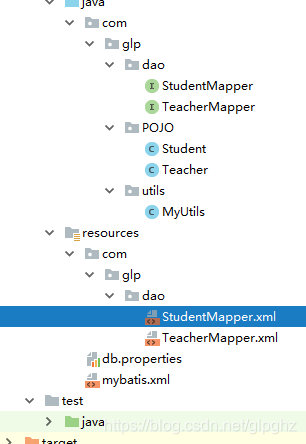
(1) 创建实体类pojo
@data
public class student {
private int id;
private string name;
private teacher teacher;
}@data
public class teacher {
private int id;
private string name;
}
(2) 创建学生实体类对应的接口
public interface studentmapper {
//查询所有学生的信息
list<student> getstudent();
list<student> getstudent2();
}(3) 编写学生接口对应的mapper.xml
为了达到和接口在同一个包中的效果,在resource文件夹下新建包结构com.glp.dao:
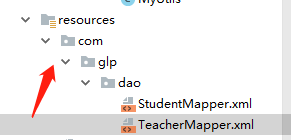
<?xml version="1.0" encoding="utf-8" ?>
<!doctype mapper
public "-//mybatis.org//dtd config 3.0//en"
"http://mybatis.org/dtd/mybatis-3-mapper.dtd">
<mapper namespace="com.glp.dao.studentmapper">
<!--按照结果查询——联表查询-->
<select id="getstudent2" resultmap="studentmap2">
select s.id sid,s.name sname,t.name tname from student s, teacher t where s.tid=t.id;
</select>
<resultmap id="studentmap2" type="student">
<result property="id" column="sid"/>
<result property="name" column="sname"/>
<association property="teacher" javatype="teacher">
<result property="name" column="tname"/>
</association>
</resultmap>
<!--按照查询嵌套处理——子查询-->
<select id="getstudent" resultmap="studentmap" >
select * from student;
</select>
<resultmap id="studentmap" type="student">
<result property="id" column="id"/>
<result property="name" column="name"/>
<!--复杂属性:对象association, 集合collection-->
<association property="teacher" column="tid" javatype="teacher" select="getteacher"/>
</resultmap>
<select id="getteacher" resulttype="teacher">
select * from teacher where id = #{id};
</select>
</mapper>在多对一查询中,需要用到teacher这个表,每个学生都对应着一个老师。而property只能处理单个属性,像teacher这种复杂属性(内含多个属性)需要进行处理。处理复杂对象要用association 。
方式一:
- 联表查询(直接查出所有信息,再对结果进行处理)
<resultmap id="studentmap2" type="student">
<result property="id" column="sid"/>
<result property="name" column="sname"/>
<association property="teacher" javatype="teacher">
<result property="name" column="tname"/>
</association>
</resultmap>直接查询出学生和老师,然后用association去取老师里面的属性property。
方式二:
- 子查询(先查出学生信息,再拿着学生中的tid,去查询老师的信息)
<resultmap id="studentmap" type="student">
<result property="id" column="id"/>
<result property="name" column="name"/>
<!--复杂属性:对象association-->
<association property="teacher" column="tid" javatype="teacher" select="getteacher"/>
</resultmap>
<select id="getteacher" resulttype="teacher">
select * from teacher where id = #{id};
</select>在resultmap中引入属性association,通过javatype指定property="teacher"的类型,javatype="teacher"。通过select引入子查询(嵌套查询)。

这里是拿到学生中的tid,去查找对应的老师。
(4)在核心配置类中引入mapper
db.properties:数据库连接参数配置文件
driver = com.mysql.jdbc.driver url=jdbc:mysql://localhost:3306/mybatis?usessl=true&useunicode=true&chracterencoding=utf8 username =root password =mysql
mybatis.xml:
<?xml version="1.0" encoding="utf-8" ?>
<!doctype configuration
public "-//mybatis.org//dtd config 3.0//en"
"http://mybatis.org/dtd/mybatis-3-config.dtd">
<configuration>
<properties resource="db.properties">
<property name="username" value="root"/>
<property name="password" value="mysql"/>
</properties>
<settings>
<setting name="logimpl" value="stdout_logging"/>
</settings>
<typealiases>
<typealias type="com.glp.pojo.student" alias="student"/>
<typealias type="com.glp.pojo.teacher" alias="teacher"/>
</typealiases>
<environments default="development">
<environment id="development">
<transactionmanager type="jdbc"/>
<datasource type="pooled">
<property name="driver" value="${driver}"/>
<property name="url" value="${url}}"/>
<property name="username" value="${username}"/>
<property name="password" value="${password}"/>
</datasource>
</environment>
</environments>
<mappers>
<mapper class="com.glp.dao.studentmapper"/>
<mapper class="com.glp.dao.teachermapper"/>
</mappers>
</configuration>注意:
要保证接口和mapper.xml都在同一个包中。
(5) 测试
public class userdaotest {
@test
public void getstudent(){
sqlsession sqlsession = myutils.getsqlsession();
studentmapper mapper = sqlsession.getmapper(studentmapper.class);
list<student> list = mapper.getstudent();
for (student stu:list ) {
system.out.println(stu);
}
sqlsession.close();
}
@test
public void getstudent2(){
sqlsession sqlsession = myutils.getsqlsession();
studentmapper mapper = sqlsession.getmapper(studentmapper.class);
list<student> list = mapper.getstudent2();
for (student stu:list ) {
system.out.println(stu);
}
sqlsession.close();
}
}ⅱ 一对多查询:老师——学生
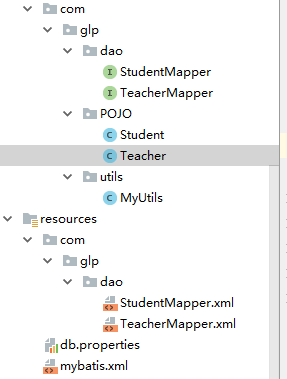
(1)实体类
@data
public class student {
private int id;
private string name;
private int tid;
}@data
public class teacher {
private int id;
private string name;
private list<student> students;
}(2) 接口
package com.glp.dao;
public interface teachermapper {
teacher getteacher(@param("tid") int id);
teacher getteacher2(@param("tid") int id);
}(3)接口对应的mapper.xml
<?xml version="1.0" encoding="utf-8" ?>
<!doctype mapper
public "-//mybatis.org//dtd config 3.0//en"
"http://mybatis.org/dtd/mybatis-3-mapper.dtd">
<mapper namespace="com.glp.dao.teachermapper">
<!--方式一 ======================= -->
<select id="getteacher" resultmap="teacherstudent">
select s.id sid, s.name sname, t.name tname, t.id tid from
student s ,teacher t where s.tid = t.id and t.id = #{tid};
</select>
<resultmap id="teacherstudent" type="teacher">
<result property="id" column="tid"/>
<result property="name" column="tname"/>
<collection property="students" oftype="student">
<result property="id" column="sid"/>
<result property="name" column="sname"/>
<result property="tid" column="tid"/>
</collection>
</resultmap>
<!--方式二 ======================= -->
<select id="getteacher2" resultmap="teacherstudent2">
select * from teacher where id = #{tid};
<!--这里的tid和接口中指定的属性名相同-->
</select>
<resultmap id="teacherstudent2" type="teacher">
<result property="id" column="id"/>
<result property="name" column="name"/>
<!--上面的两个可以省略-->
<collection property="students" column="id" javatype="arraylist" oftype="student" select="getstubyid"/>
</resultmap>
<select id="getstubyid" resulttype="student">
select * from student where tid=#{tid};
<!--查询老师对应的学生,#{tid}-->
</select>
</mapper>方式一:
- 联表查询,需要写复杂sql
- collection 用来处理集合,oftype用来指定集合中的约束类型
- 联合查询时,查询出所以结果,然后再解析结果中的属性,将属性property赋予到collection中。
方式二:
- 子查询,需要写复杂映射关系
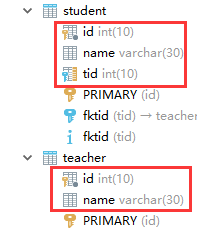

查询学生时,需要拿着老师的id去查找,column用来给出老师的id。
(4)测试:
package com.glp.dao;
public class userdaotest {
@test
public void getteacher(){
sqlsession sqlsession = myutils.getsqlsession();
teachermapper mapper = sqlsession.getmapper(teachermapper.class);
teacher teacher = mapper.getteacher(1);
system.out.println(teacher);
sqlsession.close();
}
@test
public void getteacher2(){
sqlsession sqlsession = myutils.getsqlsession();
teachermapper mapper = sqlsession.getmapper(teachermapper.class);
teacher teacher = mapper.getteacher2(1);
system.out.println(teacher);
sqlsession.close();
}
}总结
以上为个人经验,希望能给大家一个参考,也希望大家多多支持代码网。






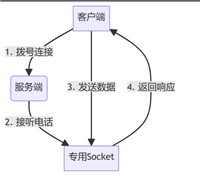
发表评论